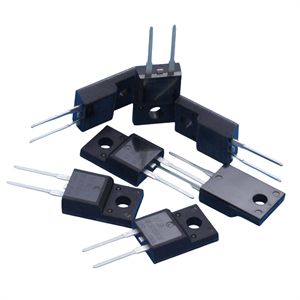Date:2024-11-19 Categories:Product knowledge Hits:335 From:Guangdong Youfeng Microelectronics Co., Ltd
1. Check the unidirectional conductivity of three PN junctions
Set the multimeter to the R × 1k position and measure the forward and reverse resistance between A-GA, GA-GK, and GK-K. The forward resistance should be several thousand ohms to tens of thousands of ohms, and the reverse resistance should be infinite, indicating that the PN junction has unidirectional conductivity.
2. Check for reverse conductivity
Simply short circuit GA to A to observe reverse conductivity. But to make the effect more obvious, GK and K are also short circuited. At this time, there are only two parallel silicon PN junctions of the same polarity between A and K, and the K pole is connected to the positive pole of the PN junction, while the A pole is connected to the negative pole of the PN junction.
Therefore, connect the black probe to the K pole and the red probe to the A pole to measure the forward resistance, which is about several thousand ohms. This characteristic is called "reverse conduction" (meaning reverse conduction).
If the positions of the probes are swapped, there will be no reverse conductivity and the resistance will become infinite.
3. Check the triggering ability
Firstly, connect the black probe to pole A and the red probe to pole K. If the resistance is infinite, it proves that the device is turned off. Follow the steps below again:
(1) Place the red pen tip on the GA pole and then disconnect it (but the red pen always stays on the A pole), which is equivalent to applying a negative pulse to the GA pole. If the resistance rapidly decreases, it indicates that the device has triggering ability.
(2) Take a black probe and place it on the GK pole, then disconnect it. This is equivalent to inputting a positive pulse to the GK pole, causing the resistance value to rapidly decrease, indicating triggering ability.
4. Check the shutdown capability
Firstly, use the method introduced above to make the device conductive, and then perform the following operations:
(1) Use a black pen tip to touch the GA pole, then disconnect it. If the resistance becomes infinite, it proves that the device is turned off.
(2) Place the red pen tip on the GK pole and quickly disconnect. If the resistance is infinite, it indicates that the SCS is turned off.

Previous: Classification, Structure, and Principle of MOSFET